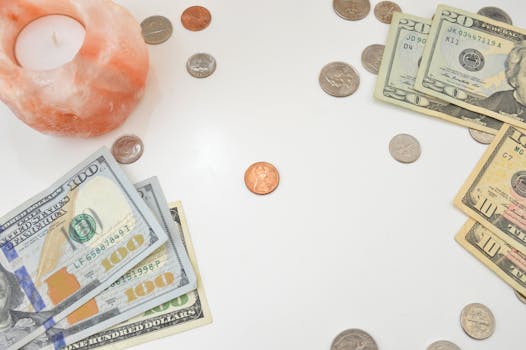Personal finance
Why Tracking Your Spending Changes How You Save
Learn how tracking spending builds real savings momentum. Uncover practical tips, smart routines, and real-life strategies to control your money, change habits, and achieve meaningful financial goals.
Advertisement
Most people remember that gut-check moment after a purchase, when a look at their balance raises eyebrows. Suddenly, that new streaming subscription or takeout order feels less like a treat and more like a clue. There’s a reason for that feeling, and it goes deeper than guilt.
Money slips through our fingers in small, everyday decisions. When those moments aren’t reflected anywhere, our savings never add up the way we hope. Digging into where your cash actually goes is the starting line of any real progress.
This article brings you into the world of tracking spending—showing how small tweaks in tracking provide control, reveal patterns, and transform your approach to saving for the future. Get ready for practical steps and unexpected insights.
Making Your Money Visible Puts You Back in Control
Writing down expenses creates instant clarity. Each transaction from your bank or wallet appears on paper or screen so you finally know where cash flows daily. That simple act of observation changes your thinking—and your habits.
Tracking spending reshapes priorities. When every dollar has a purpose, you move from “hoping to save” to actually seeing results. Control replaces avoidance, and confidence grows with every tracked line on your statement.
Spotting Patterns as They Happen
Open your tracking app or spreadsheet and you’ll see habits, not just numbers. “Wow, I buy coffee almost every weekday,” someone might mutter. Those line items highlight fast-food lunches or recurring subscriptions, all of which quietly drain your savings.
Spotting these patterns is like turning the lights on in a cluttered room. Suddenly, you see opportunity: “If I skip two lunches out a week, I’ll have enough by month’s end for my emergency fund.” Action becomes obvious.
Behavior changes fast after tracking spending for even a week. Tallying up those $7 charges leads directly to swapping them for homemade meals—a change that pays off. Each new pattern you see is a prompt for future savings moves.
Reflecting on Emotions and Choices
Tracking spending also triggers emotional awareness. Someone might say, “Every time work’s stressful, I’m ordering food instead of cooking.” That insight lets you prepare strategies for tough days, like prepping meals ahead.
Money tracking brings you face-to-face with impulse buys and emotional shopping. When you realize you spend more on bad days, you’re less likely to repeat it without planning to make a healthy change first.
This focus on emotions fuels smarter habits. Instead of avoiding your bank statement, you’ll review it with curiosity—asking, “What pattern is showing up this month?” That curiosity is the foundation of real growth.
Using Data to Take Action
The numbers you collect only help if you put them to work. Every tracked transaction is data for decisions. If groceries always overrun your budget, use your log to tweak meal plans or visit different stores.
Savings changes when you set concrete rules, like giving yourself $40 a week for dining out and checking your progress every Friday. The data backs up each adjustment so you can try new approaches, track the outcome, and keep improving.
Nothing’s vague anymore. Decisions are measurable, and you’re setting yourself up for consistent success by responding to real, personal evidence—rather than instinct or memory.
| Tracking Method | Ease of Use | Setup Time | Best For | Takeaway |
|---|---|---|---|---|
| Simple Notebook | Very Easy | 5 min | Hands-on learners | Write big purchases each day for clarity. |
| Spreadsheet | Medium | 30 min | Detail-oriented people | Total up weekly spending, then set category limits. |
| Tracking App | Easy | 10 min | Anyone with a smartphone | Check daily push notifications for budget tips. |
| Bank Alerts | Very Easy | 10 min | Busy schedules | Enable alerts for every debit over your limit. |
| Cash Envelope System | Requires adjustment | 20 min | Visible spenders | Label envelopes for categories and stop spending when empty. |
Setting Rules Sparks Smart Changes in Daily Habits
Rules only work when they’re simple, visible, and easy to apply. “No eating out on weekdays” or “Review spending every Sunday” are two examples of habits that keep cash flowing toward your savings.
These changes may sound strict, but they’re actually empowering. Each rule relieves you from guesswork, replacing faulty memory with clear, repeatable actions that drive better results when tracking spending every day.
Daily Decisions Are Easier with Clear Categories
Breaking expenses into key categories lets you spot priorities instantly. When you see that “Eating Out” jumps above rent, you clearly know where to cut back and redirect funds for savings goals.
Each category is a choice: assign a cap, watch your progress, and celebrate small wins as spending drops below it. This category approach makes your budget flexible and helps adapt as needs change—never rigid, always useful.
- Track groceries weekly to spot creeping increases—use sales and lists to pull back overspending by month-end.
- Limit non-essential purchases by using a spending freeze one or two days a week to build up your savings buffer.
- Assign cash to a “fun” envelope, and when it’s out, pause extra leisure spending. This maintains balance and removes guilt from treats.
- Schedule bill review nights each month so you avoid late fees—set a phone reminder for added accountability and peace of mind.
- Connect with a friend or partner to compare savings strategies and review goals—outside accountability keeps motivation fresh and practical.
Choosing these rules means you spend by design, not by accident. Tracking spending becomes part of your routine, making your money work for you—not slipping through the cracks.
Mini Resets Stop Drifting Off-Track
Life throws curveballs, causing budgets to drift. Mini resets—like a weekly review—catch you before bad habits become routine. “Wow, I only saved $10 this week, time to review receipts,” is a powerful check-in.
These resets give you a restart without waiting for next month. If eating out spiked last week, shift this week’s goal: bring lunch from home to rebalance spending. It’s a quick adjustment backed by concrete numbers.
- Block 10 minutes every Sunday for a spending check—review your biggest category, set a target for the next week, and track changes.
- If a surprise bill throws you off, adjust categories instead of quitting—reduce in one area to save another.
- Use a whiteboard for quick visual checks: circle areas over budget and add reminders for sticking to new rules.
- Revisit your goals after a busy month rather than ignoring slips—resetting stops small missteps from snowballing.
- After impulsive buys, talk through what led to the splurge to build awareness—replace with a positive step like adding a savings jar for leftover change.
Resets are not punishments. Each one closes gaps and refocuses your efforts, using tracking spending to turn slips into stronger habits for next time.
Redirecting Wasteful Spending Unlocks Hidden Savings Fast
If you’ve ever bought seasonal items that gather dust, you’ve experienced wasteful spending. Tracking spending reveals thousands lost every year to forgotten gym passes or trendy gadgets. Redirecting those dollars creates a real savings boost.
Use the “Audit and Flip” Challenge
Write down everything you buy for two weeks—snacks, memberships, one-time splurges. At the end, highlight purchases that add no lasting joy or practical value. These are candidates for redirecting to savings.
Next, create a “flip” list. For each purchase cut, move that exact amount to a high-yield savings account as soon as you skip it. Example: “I didn’t grab that $5 latte—I’m transferring $5 today.” This immediate action cements savings as a reward.
After a month, tally the “flipped” dollars. Most people discover $100 or more in hidden savings using tracking spending, rewarding their effort faster than expected.
Apply the “Cancel and Reinvest” Strategy
Every quarter, review auto-renew services and ask: “If I had to buy this for the first time today, would I?” Cancel the ones that don’t make your list—streaming, gym memberships, unused apps.
Reinvest the reclaimed cash right away. Tell yourself, “I’m saving $15 a month from this canceled service, so I’ll up my emergency fund until it matches.” Use tracking spending to measure how much you recover.
This is more than minimalism—it turns your choices into monthly savings that are visible, measurable, and immediate. Repeat it each quarter for lasting change.
Building Savings Momentum by Tracking Small Wins Every Week
The fastest progress comes from watching victories multiply. Recording victories weekly—no matter how tiny—lets progress shine through even slow months. Momentum builds as your tracked savings stack up.
Celebrate Every Dollar Saved and Log It
Every time you meal-prep instead of ordering delivery, document the money saved and log it on a chart. That act of celebration fuels consistency. Imagine saying, “I saved $30 this week just by skipping deliveries. Time to update the log!”
Visual markers—color-coded charts, jars with labels—turn small wins visible and spark motivation to keep going. This works for individuals and families alike, making savings a team pursuit.
Check savings progress on the same day each week to make it a ritual. The small dopamine rush from seeing totals rise reinforces the good habit, turning tracking spending into a feel-good activity rather than a chore.
Create Stretch Savings Challenges for Extra Motivation
Add excitement by starting a challenge. Invite family or friends, set targets—saving $20 from groceries, or $50 by biking to work. Use group chats to report back.
Short-term challenges focus your attention. They work by sharing wins, joking about creative cost-cuts, and egging each other on to make better decisions. Track every penny moved to savings—no win is too small.
After each challenge, celebrate together. Order pizza with savings, or set a shared goal for a bigger outing. Each success makes the process fun, sustainable, and personal, raising your savings game while keeping the group accountable.
Turning Awareness into Long-Term Financial Change
Tracking spending is the habit that quietly shifts your entire approach to money. By watching each dollar, you gain control, catch patterns that drain reserves, and reroute cash toward the goals that matter most.
Putting awareness into action means building rituals, setting rules, and celebrating victories however small. The cycle of observation, reflection, and adjustment is the foundation of savings that stick—no more chasing lost cash.
Momentum gathers as savings grow. Whether you use a notebook, app, or envelope, the process keeps evolving with you. Make tracking spending a lifelong partner, and you’ll keep discovering smarter ways to build, protect, and enjoy your money.





